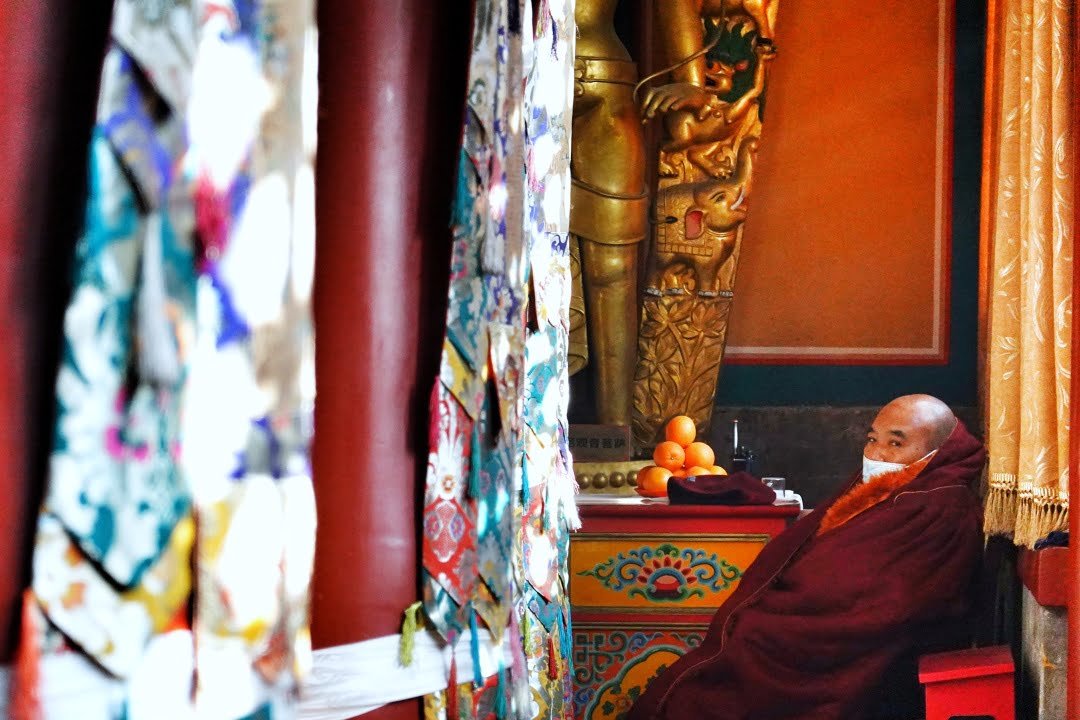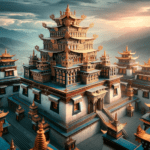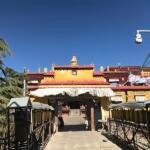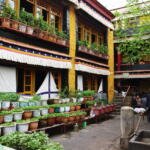Phakpa Lhakang’s Rich History
Phakpa Lhakang, also known as འཕགས་པ་དགོན།, stands as a significant historical site in Tibetan culture. This majestic temple, located merely 30 meters east of Gyirong Town in Shigatse, Tibet, sits at an elevation of 2850 meters. Phakpa Lhakang is a celebrated national cultural relic, established in 637 AD by the Tibetan King Songtsen Gampo. Among its many treasures is the revered Jowo Woti Sangpo,(ཇོ་བོ་ལྦ་ཏི་བཟང་པོ་) one of the three Buddha statues brought by Princess Bhrikuti of Nepal to Tibet.
Architectural Uniqueness of Phakpa Lhakang
Phakpa Lhakang boasts a distinctive architectural style that blends stone and wood, forming a striking four-story pagoda-like structure. Its internal spiral staircase allows visitors to explore each level. The temple’s eaves, adorned with pot doors, small windows, and flying corners, taper gracefully upwards. Notably, the first and second floors feature flame-shaped copper decorations on the eaves, while the upper floors are adorned with brass overhanging eaves. The temple is crowned with a copper finial, adding to its spiritual symbolism.
The Main Hall’s Splendor
The ground floor, serving as the main hall, is a focal point of religious activity. It comprises a porch and a central hall, surrounded by corridors for circumambulation. Four pillars support the porch, each corner guarded by round-carved wooden lions. The square hall is supported by 14 pillars and lit by small windows, creating a serene ambiance. The hall houses an array of significant Buddha statues and artifacts, including the Jowo Woti Sangpo statue, symbolizing Buddha at age eight.
Buddha Statues and Sacred Artifacts
The hall’s walls are adorned with various Buddha statues, each telling a part of Tibet’s spiritual story. Of particular interest is the clay statue of the 13th Dalai Lama, Thubten Gyatso, and the towering statue of Guru Rinpoche. The hall also features gold and silver butter lamps and a brass butter barrel, contributing to the sacred atmosphere.
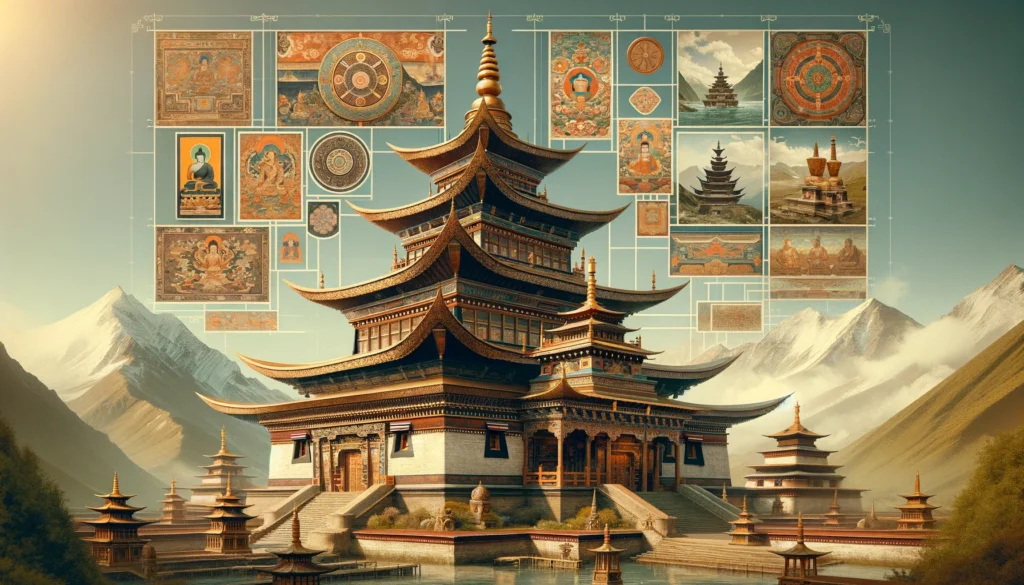
Phakpa Lhakang’s Outer Gallery Murals
Explore Phakpa Lhakang’s Masterpieces
The Outer Gallery Murals at Phakpa Lhakang are a testament to Tibetan artistry. Recorded in the “Gyirong County Cultural Relics Records,” these murals offer a vivid portrayal of Tibetan Buddhism and history. South Wall: Divine Guardians: The South Wall captivates visitors with its depictions of Shakyamuni, Tara, and Dharmapala. The Western Guardian King Virupaksha and Eastern Guardian King Dhritarashtra add to the mural’s spiritual depth.
West Wall: A Historical Canvas: The West Wall takes you through Tibetan Buddhism’s heritage, featuring Dharmapala, the Sixteen Arhats, and revered monks. North Wall: Early Tibetan Art: The North Wall presents early Tibetan artworks, showcasing significant Buddhist figures and narrating their spiritual stories.
East Wall: An Era’s Evolution: The East Wall’s southern part displays murals from two distinct periods, illustrating both early Tibetan Empire art and 14th-century scenes, including the life of Shakyamuni Buddha and Songtsen Gampo’s era. These murals stand out with their bright colors and glossy finish, marking a significant evolution in the region’s artistic style.
Visitor Information for Phakpa Lhakang
- Admission: Free (donations appreciated)
- Opening Hours: 9:00 AM – 5:00 PM
- Location: Just 73 kilometers from Gyirong County town, accessible by car (rental costs approximately 200-350 yuan).
Phakpa Lhakang is not just a temple; it’s a journey through Tibet’s rich history, culture, and spirituality. Whether you’re drawn to history, art, or seeking spiritual insight, Phakpa Lhakang offers a unique and enriching experience for all visitors.

